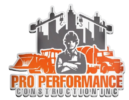LEED Certification: Paving the Way to Sustainable Building Practices
In an era where sustainability and environmental responsibility are at the forefront of construction and real estate development, LEED certification stands as a beacon of green building practices. Leadership in Energy and Environmental Design (LEED) is a globally recognized certification system that signifies a commitment to sustainable design, construction, and operation of buildings. This article delves into what LEED certification entails, its key components, benefits, and future trends, providing a comprehensive understanding of its role in fostering eco-friendly and energy-efficient buildings.
What is LEED Certification and How Does It Work?
LEED certification is a framework developed by the U.S. Green Building Council (USGBC) to promote and recognize sustainable building practices. The certification process involves a set of rigorous criteria across various environmental performance areas, encouraging buildings to achieve high standards in sustainability.
How It Works:
- Rating System: LEED uses a point-based system where projects earn points for meeting specific sustainability criteria. The more points a project earns, the higher the certification level it can achieve.
- Certification Levels: LEED certification is awarded at four levels—Certified, Silver, Gold, and Platinum—based on the number of points accumulated.
- Categories: The certification process covers several key areas, including sustainable site development, water efficiency, energy and atmosphere, materials and resources, indoor environmental quality, and innovation in design.
Key Components of LEED Certification
The LEED certification system is comprehensive, addressing various aspects of building performance. Here are some of the core components:
- Sustainable Site Development: Focuses on reducing the impact of the building on its site and the surrounding environment, such as minimizing land disruption and promoting sustainable landscaping practices.
- Water Efficiency: Aims to reduce water usage through efficient fixtures, landscaping, and water recycling systems, contributing to conservation and reduced utility costs.
- Energy and Atmosphere: Emphasizes energy efficiency and the use of renewable energy sources, including high-performance HVAC systems, efficient lighting, and advanced building controls.
- Materials and Resources: Encourages the use of sustainable materials, waste reduction, and recycling, promoting the use of materials with lower environmental impact and supporting a circular economy.
- Indoor Environmental Quality: Focuses on enhancing indoor air quality, natural lighting, and thermal comfort, creating healthier and more productive indoor environments.
- Innovation in Design: Rewards innovative practices and technologies that go beyond the standard requirements, showcasing cutting-edge approaches to sustainability.
Benefits of LEED Certification
Achieving LEED certification offers numerous advantages for building owners, occupants, and the environment:
- Environmental Impact: LEED-certified buildings significantly reduce energy and water consumption, lower greenhouse gas emissions, and minimize environmental degradation.
- Economic Benefits: Certified buildings often experience lower operating costs, increased property value, and potential tax incentives, making them financially attractive investments.
- Health and Well-Being: Improved indoor air quality and natural lighting contribute to better health and productivity for occupants, enhancing overall well-being.
- Market Differentiation: LEED certification enhances a building’s reputation and marketability, demonstrating a commitment to sustainability that can attract tenants, clients, and investors.
Future Trends in LEED Certification
As the demand for sustainable building practices continues to grow, LEED certification is evolving to address emerging trends and challenges:
- Integration with Smart Technologies: The future of LEED includes greater integration with smart building technologies, such as IoT sensors and advanced data analytics, to optimize building performance and efficiency.
- Focus on Climate Resilience: LEED is increasingly incorporating strategies for climate resilience, addressing the need for buildings to adapt to changing climate conditions and extreme weather events.
- Expansion of Certification Categories: New LEED categories and credit options are being developed to cover a broader range of building types and sustainability issues, including community impact and social equity.
LEED certification represents a pivotal advancement in sustainable building practices, setting a high standard for environmental responsibility and performance. By adhering to the rigorous criteria of LEED, building projects not only achieve recognition for their commitment to sustainability but also contribute positively to the environment and the well-being of their occupants.
The benefits of LEED certification are manifold, encompassing environmental, economic, and health-related advantages. As the building industry continues to evolve, LEED certification will play a crucial role in driving innovation and fostering a culture of sustainability. Embracing LEED principles is not just about meeting current standards but about paving the way for a future where sustainable building practices are the norm rather than the exception.

